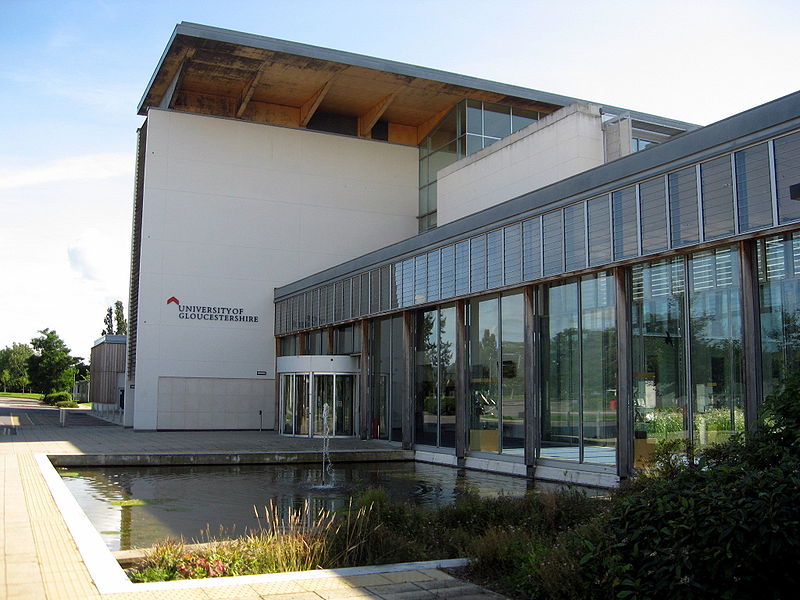saveuog.com
Defend education. Defend your colleagues. Defend the student experience.
Compulsory redundancies
In spring 2009, as part of its Transformation 2012 programme, the University of Gloucestershire invited every staff member to apply for voluntary redundancy. The T12 campaign – let’s use the abbreviation since it probably cost – was, at this time, employing two external consultants. One of these consultants, Scott Harvey, commented on the university website, "If people are not willing to support change, then maybe it's time for them to use their skills elsewhere" (ref).
What surprised many staff and students, what lent this ominous redundancy announcement its unreality, was that most of us, most of the time, felt things were going mostly OK. Not perfect – not stand on your hands wonderful – but on the whole, everything considered, the university seemed decidedly all right. Our lecturers and supervisors were generally enthusiastic and our students were generally happy. According to our Vice-Chancellor, Professor Broadfoot, applications had increased by 20 per cent and the university’s grant settlement for 2009-10 had gone up by 3.9 per cent (ibid). There were no academics playing ping pong in the corridors for want of anything else to do.
What surprised many staff and students, what lent this ominous redundancy announcement its unreality, was that most of us, most of the time, felt things were going mostly OK. Not perfect – not stand on your hands wonderful – but on the whole, everything considered, the university seemed decidedly all right. Our lecturers and supervisors were generally enthusiastic and our students were generally happy. According to our Vice-Chancellor, Professor Broadfoot, applications had increased by 20 per cent and the university’s grant settlement for 2009-10 had gone up by 3.9 per cent (ibid). There were no academics playing ping pong in the corridors for want of anything else to do.


Compulsory Redundancies


Compulsory Redundancies
But at the end of October, despite one hundred colleagues leaving, retiring, or accepting voluntary redundancy (ref), Paul Bowler, the new deputy VC, announced that Pittville Campus would be sold, and that a further thirty redundancies would be enforced at Francis Close Hall (ibid). This, he stressed, was just the beginning. For Bowler, it was also the end: after a brief and mysterious period of suspension, the university announced on December 7th that Bowler was ‘leaving of his own accord to pursue other interests’ (ref). We enthusiastically await his appearance in a Ramones tribute band.
Meanwhile, Bowler or no Bowler, senior management remains intransigently committed to the significant change agenda that he helped devise. Professor Broadfoot, while recognising that staff are ‘the University brand,’ argues that ‘We cannot though continue to afford this high ratio of staffing in the current and future climate’ (ref) (UoG has 18.7 students to every member of staff; the sector mean is 17.49 (ref)). But the real problem is debt: our university has the second worst debt-to-income ratio of any in the UK (ref). This is not through any inadequacy of front line staff, or through any lack of demand from students – the university, according to Professor Broadfoot, this year enjoyed the tenth biggest application jump in the higher education sector (ref) – indeed, it’s difficult to understand the scale of our debt when more students are paying more money to be taught by fewer members of staff.
But at the end of October, despite one hundred colleagues leaving, retiring, or accepting voluntary redundancy (ref), Paul Bowler, the new deputy VC, announced that Pittville Campus would be sold, and that a further thirty redundancies would be enforced at Francis Close Hall (ibid). This, he stressed, was just the beginning. For Bowler, it was also the end: after a brief and mysterious period of suspension, the university announced on December 7th that Bowler was ‘leaving of his own accord to pursue other interests’ (ref). We enthusiastically await his appearance in a Ramones tribute band.
Meanwhile, Bowler or no Bowler, senior management remains intransigently committed to the significant change agenda that he helped devise. Professor Broadfoot, while recognising that staff are ‘the University brand,’ argues that ‘We cannot though continue to afford this high ratio of staffing in the current and future climate’ (ref) (UoG has 18.7 students to every member of staff; the sector mean is 17.49 (ref)). But the real problem is debt: our university has the second worst debt-to-income ratio of any in the UK (ref). This is not through any inadequacy of front line staff, or through any lack of demand from students – the university, according to Professor Broadfoot, this year enjoyed the tenth biggest application jump in the higher education sector (ref) – indeed, it’s difficult to understand the scale of our debt when more students are paying more money to be taught by fewer members of staff.
Financial crisis
Central to the university's finance problem appears to be recent investment in the East London Campus, which the university first acquired in 2003 (ref). You don’t need a PhD to know that an £8.3 million investment in the University of Gloucestershire London Campus was an idea that needed some work, but it would be naïve and unfair to hold local mismanagement entirely responsible for our current crisis. According to the University and College Union, in spring 2009, the Universities and Colleges Employers Association indicated that up to 100 universities, around two-thirds of the sector, were considering redundancy programmes (ref). Many universities are struggling with lower-than-expected investment returns and reduction in public funding for Higher Education. But few universities can have been so seduced by the language of enterprise, and few universities can have so recklessly chased speculative income.
Central to the university's finance problem appears to be recent investment in the East London Campus, which the university first acquired in 2003 (ref). You don’t need a PhD to know that an £8.3 million investment in the University of Gloucestershire London Campus was an idea that needed some work, but it would be naïve and unfair to hold local mismanagement entirely responsible for our current crisis. According to the University and College Union, in spring 2009, the Universities and Colleges Employers Association indicated that up to 100 universities, around two-thirds of the sector, were considering redundancy programmes (ref). Many universities are struggling with lower-than-expected investment returns and reduction in public funding for Higher Education. But few universities can have been so seduced by the language of enterprise, and few universities can have so recklessly chased speculative income.